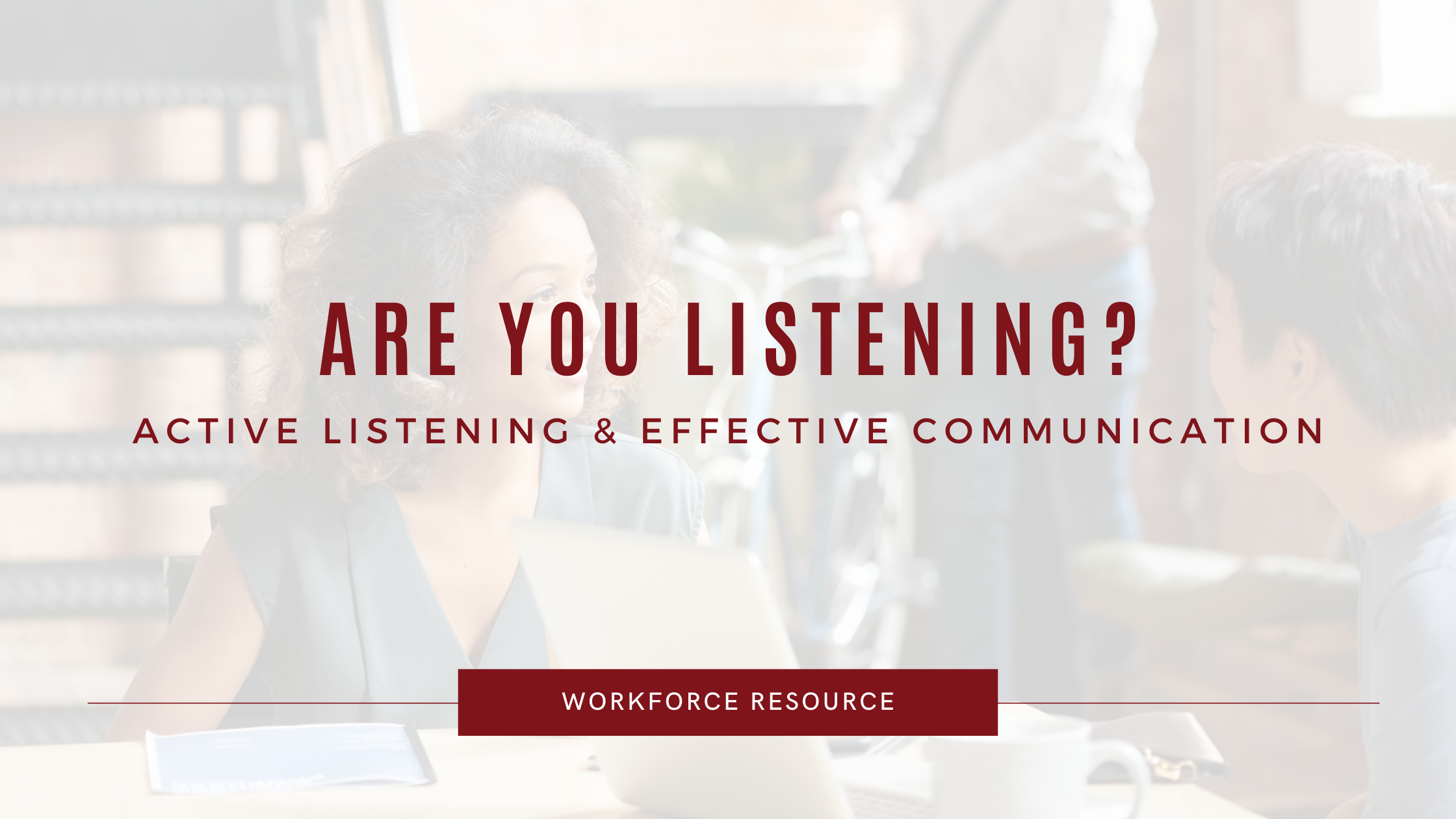We’re sure you’ve heard of the term “active listening”, but do you know how to effectively use it in conversations? It’s actually really easy! Today, we’re here to share some helpful tips for active listening as well as how active listening is beneficial in the workplace.
What is Active Listening?
Before we dive into things, let’s make sure we’re all on the same page about what active listening means. Active listening is the practice of listening attentively and displaying signs of acknowledgement when someone else is speaking. This is typically done using non-verbal cues, correct paraphrasing, and mindful reflection and feedback.
Active Listening: Best Practices
Now that we know what active listening is, how do we practice listening actively to our coworkers? Here are a few easy tips to guide the active listening process:
- Display non-verbal feedback (with things such as nodding your head, leaning in, or making eye contact).
- Be silent while the other person is communicating.
- Restate what someone else has just said to show you have accurately heard and understood them.
- Provide thoughtful reflections and feedback after the other person has shared.
Simple as that! These suggestions may take some time to turn into habits – but rest assured, once you use active listening in conversations, you’ll notice your connections with others strengthen and your own communications skills improve. You’ll be prepared to go into any conversation!
Active Listening in the Workplace
Now, how is active listening beneficial in the workplace? There are so many advantages! Using active listening in the workplace is a great way to ensure effective communication with everyone you work with. While there are numerous ways in which active listening can be valuable for yourself and your coworkers, we wanted to share some key takeaways from a couple articles we read:
- Building trust
- Showing that you understand what your supervisor or coworker is saying by using active listening can show them that you are thoughtful and engaged. They’ll know that you are someone that can be trusted with important tasks and will complete them with a comprehensive understanding of what is required.
- Increasing workplace productivity
- If you accurately understand what a colleague is describing, it will decrease the time needed for clarifications and questions – meaning you can quickly jump into the task at hand. Not to mention your colleagues will be super impressed!
- Conflict resolution
- This may be the most obvious benefit of active listening yet! Conflicts can, and do, arise in the workplace, so it’s great to be prepared to deal with them. If you can listen and show that you understand both sides to a conflict, you’ll be able to find a quicker, more effective solution to the problem.
Now that you have a comprehensive understanding of active listening and its benefits within the workplace – try it out with some of your coworkers! Hopefully with some practice, you’ll begin to notice your communication skills improve.
Additional Resources
Want to read more about effective active listening? This article on Indeed and this blog post by Elle Kaplan are great resources that helped us better understand active listening and the benefits it has in the workplace.
If you’re looking for more information on how to use active listening to manage difficult conversations in the workplace, our blog post Cultivating Skills for Difficult Conversations by Emily Seggie goes into more depth about active listening and is super helpful.
Think your team would benefit from learning more about active listening, but don’t know where to start? Send us an email at [email protected] and ask us about booking an interactive active listening training session for your team!
